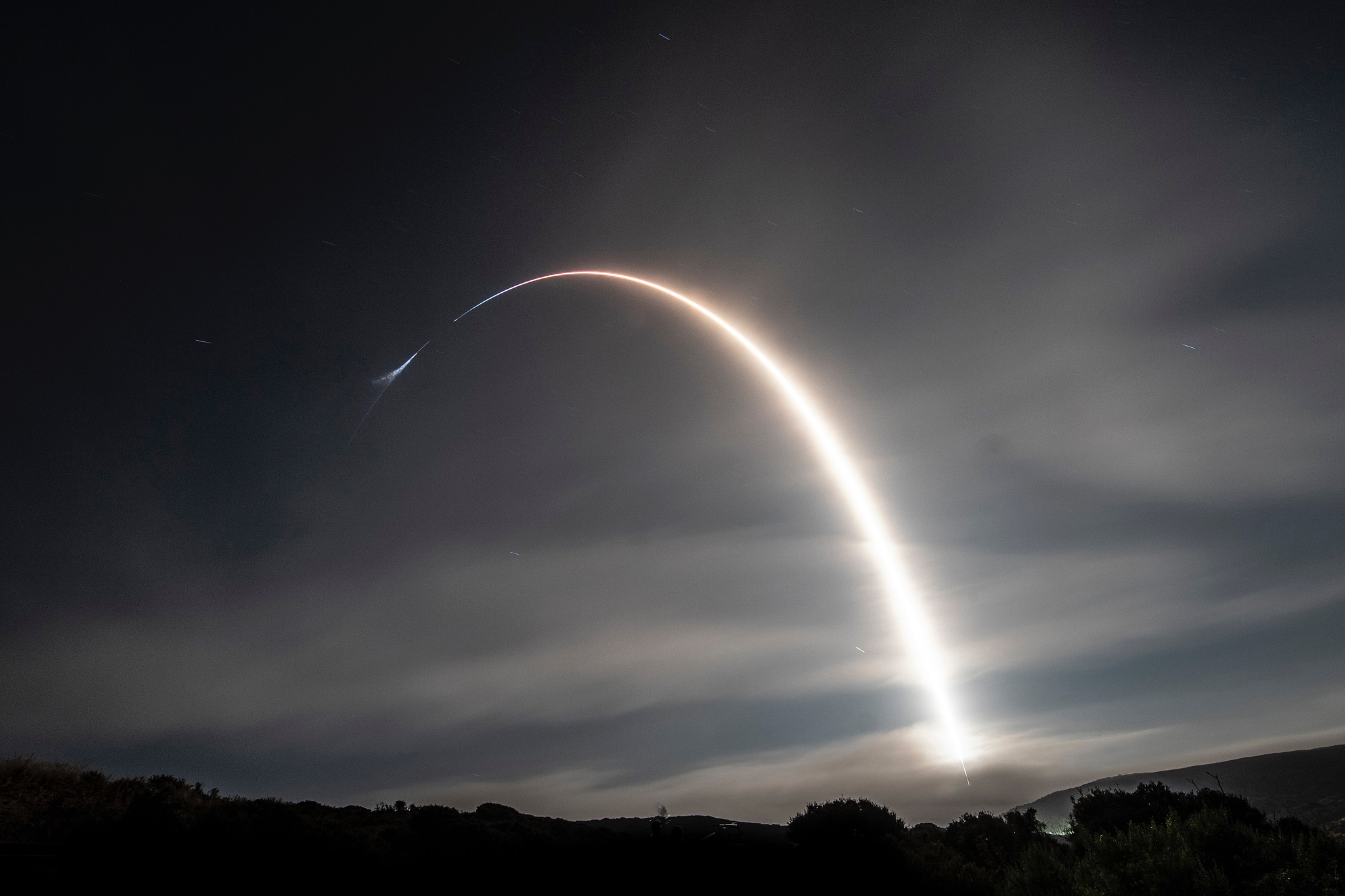SpaceX to Attempt 1st West Coast Falcon 9 Rocket Landing on Sunday

SpaceX is targeting an evening launch Sunday (Oct. 7) for its next Falcon 9 rocket flight, a mission that will also mark the first land-based landing of the booster on the West Coast. The rocket will lift off from SpaceX's pad at California's Vandenberg Air Force Base.
"This will be SpaceX's first land landing attempt at Vandenberg Air Force Base," Air Force officials said in an advisory. "Local residents may see the first stage of the Falcon 9 returning to Vandenberg AFB, including multiple engine burns associated with the landing. During the landing attempt residents from Santa Barbara, Ventura and San Luis Obispo counties may hear one or more sonic booms."
Smoke billowed around the Falcon 9 Tuesday, Oct. 2, as it briefly fired its engines during a preflight test from SpaceX's SLC-4E launch pad at Vandenberg. After delaying the launch 24 hours for preflight checkouts, it is now set to launch the night of Sunday. The brief ignition, known as a static fire test, is one of the last major milestones in launch preparations, ensuring that all systems are working properly and both the rocket and the pad are ready for launch. [Inside SpaceX's Epic Fly-Back Reusable Rocket Landing (Infographic)]
The launch, carrying an Argentinian Earth-observing satellite, should occur no earlier than 7:21 p.m. PDT on Oct. 7 (0221 GMT on Oct. 8). This flight will mark the first SpaceX launch from its West Coast launch facility since July 25.
This launch will also be the second reflight of a Block 5 Falcon 9 first stage: The same rocket — known to SpaceX as B1048 — previously lofted 10 Iridium Next satellites into orbit on July 25.
The Argentine Space Agency's 3,527-lb (1,600 kilograms) SAOCOM-1A satellite, the launch's payload, is a part of a future six-satellite constellation that will work in tandem with an Italian constellation known as COSMO-SkyMed. The satellite consortium will take high-resolution images of Earth twice a day.
The flight is also unique because it will mark the first time a Falcon 9 will attempt a return-to-launch-site (RTLS) landing on the West Coast, rather than landing on one of the company's drone ships at sea. So far, all landings on solid ground have been carried out at Landing Zones 1 and 2 at Cape Canaveral Air Force Station in Florida.
Sign up for the Live Science daily newsletter now
Get the world’s most fascinating discoveries delivered straight to your inbox.
With nearly 30 landings under its belt, SpaceX has proven that recovering first-stage boosters is a breeze, but this landing could be a bit tricker: The launch pad is only a mere quarter-mile (or roughly 400 meters) from the launch pad — a stark contrast to Cape Canaveral, where the company's two landing pads are several miles away.
SpaceX could also activate its fairing-catching boat, Mr. Steven, which so far has been unable to snag a piece of the rocket's nose cone as it descends to Earth. This is another facet of SpaceX's effort to reduce launch costs by reusing as much of the rocket as possible.
If this fifth recovery attempt were successful, it could be the ultimate launch trifecta for SpaceX.
Follow us @Spacedotcom, Facebook and Google+. Original article on Space.com.










